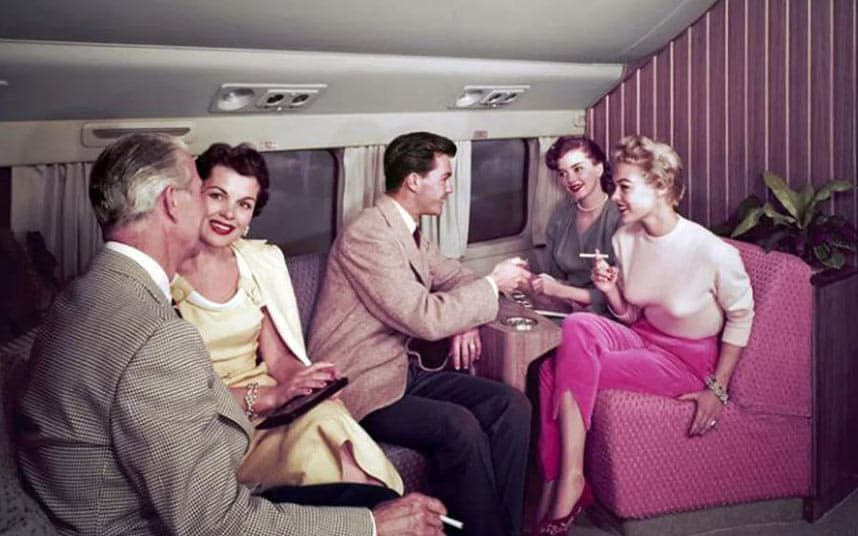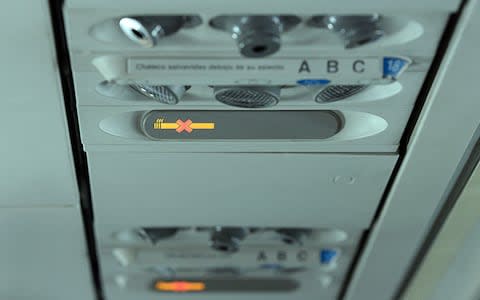Why do planes still have ashtrays?

Tell anyone under the age of 21 that you were once able to smoke on a planes and their reaction is likely to be one of utter disbelief.
You aren't even allow to smoke in some parks these days, so why did they once let you spark up in an air-tight, flying carriage, they might wonder.
And they’d be right. It seems crazy that passengers could once buy cigarettes from the cabin crew then light them at 35,000 feet without a care in the world. Second-hand smoke? Don't know what you're on about, guv.
However, no matter how ridiculous in-flight smoking may seem today (all planes were smoke-free by the end of end of the Nineties), there remains on aircraft around the world a constant – and mandatory – reminder of those hazy days: the ashtray. Why?!
According to the Federal Aviation Administration's (FAA) list of “minimum equipment” for aircraft, an ashtray in the plane toilet is still a legal requirement.

Yes, despite nobody smoking on a plane, bar a few belligerent celebrities and louts, the FAA says that lavatory doors must still be fitted with ashtrays because if someone were to have, illegally, a cheeky fag, they still need to stub it out, and it's best they have somewhere to do that rather than cause a fire by dropping it in the bin.
What’s more, if one of the aircraft’s ashtrays breaks, regulations say they must be fixed or replaced within 10 days (as long as 50 per cent of the plane’s ashtrays are operational, otherwise they must be fixed in three days).
Indeed, in 2009, it was reported that a British Airways plane was delayed because staff were searching for a “vital” replacement ashtray.
A spokesperson at the time said: “It is a legal requirement, under air navigation orders, to have ashtrays because while smoking is not permitted on flights, if someone were to light a cigarette on board there must be somewhere to safely extinguish it.”
Even the Boeing 787 Dreamliner - billed as one of the most technologically advanced aircraft in history - has tiny, little single cigarette ashtrays in its toilets, with room enough for one butt. Heaven help us if the extinguishing space is already taken.
To perfectly illustrate the dangers of smoking on planes, 123 passengers died in 1973 on Varig Flight 820 from Rio de Janeiro to Paris after a fire broke out when a cigarette was thrown in the rubbish bin of the toilet. The cabin filled with smoke and the pilot was forced to make a crash landing in a field about 10 miles south of the French capital.
That said, the Civil Aviation Authority (CAA), the FAA’s British sibling, says there is no mention of mandatory ashtrays, only that smoking is illegal on planes.
Despite the regulations, the presence of ashtrays even seems to bewilder the senior management of some airlines.
Writing for Telegraph Travel in 2008, Sam Leith discovered the silver-grey quirk on the inaugural flight of a new Airbus A380, along with “always-illuminated, no-smoking signs”.
“When I asked a spokesman for Singapore Airlines, he confessed that even the company’s CEO had been baffled as to what they were doing there,” he said.
A special mention must go to always-defunct airline, SmintAir (short for Smoker’s International Airlines), which tried in 2004 (after it had long been illegal) to launch a carrier aimed at businessmen who still wanted to smoke in the sky. It hoped to fly two Boeing 747s between Dusseldorf and Tokyo but its financing fell through at the last minute.
